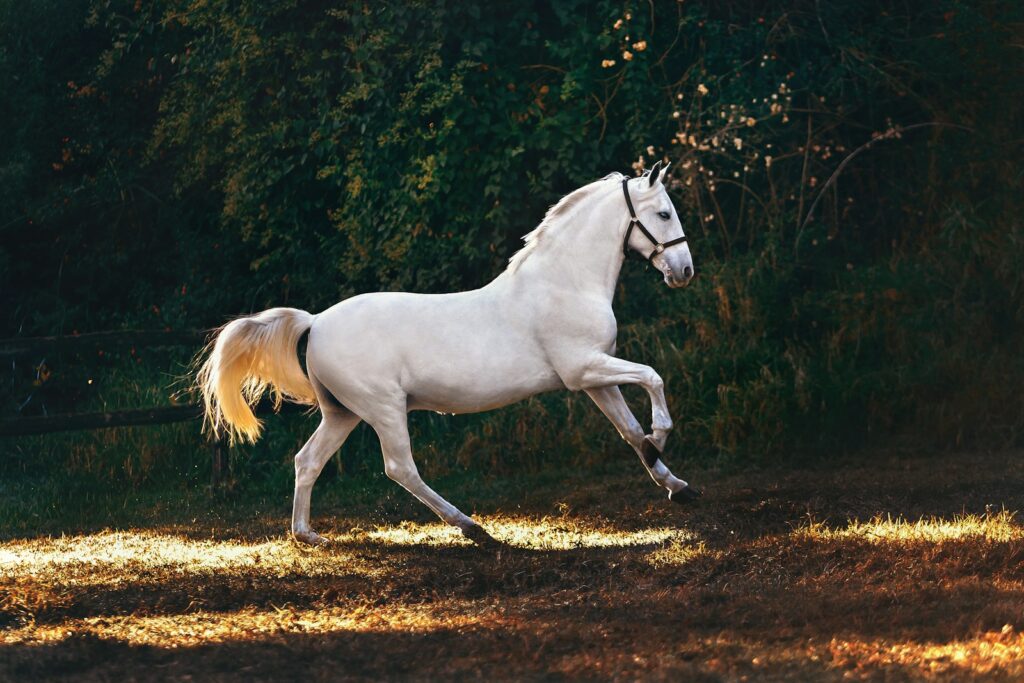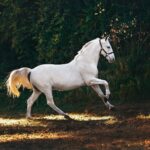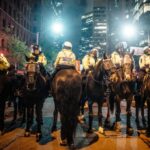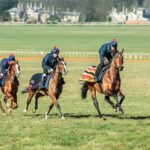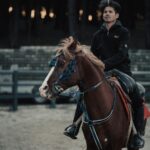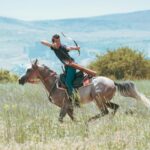While the Kentucky Derby and Royal Ascot might dominate equestrian headlines, the world hosts an astonishing array of lesser-known horse festivals that celebrate these magnificent animals in culturally unique ways. From the frigid Mongolian steppes to the sun-drenched Mediterranean coastlines, communities have forged profound bonds with horses that manifest in vibrant celebrations combining sport, spirituality, and centuries of tradition. These festivals often remain hidden gems to international travelers, yet they offer authentic windows into how different cultures honor the ancient partnership between humans and horses. Join us on a global journey to discover the most fascinating equestrian celebrations you’ve likely never encountered—events where horses aren’t merely animals but cultural treasures carrying the weight of history, identity, and community pride.
Naadam Festival: Mongolia’s Ancient Three Games

Deep in the vast Mongolian steppes, the Naadam Festival showcases the extraordinary horse-riding culture that once powered Genghis Khan’s empire. Dating back to the 13th century, this UNESCO-recognized celebration features the “Three Manly Games” of wrestling, archery, and most spectacularly, horse racing. Unlike Western races, Naadam’s cross-country competitions stretch between 15-30 kilometers across rugged terrain, with children as young as five or six serving as jockeys—a tradition honoring the historical necessity for all Mongolians to ride from an early age. The festival’s horse races, particularly the Soyolon (two-year-old horse race), draw thousands of spectators who gather to witness these young riders command their mounts without saddles while singing traditional victory songs called gingoo. Visitors are often astonished to witness the deep spiritual connection Mongolians maintain with their horses, including pre-race rituals where fermented mare’s milk is sprinkled over the animals for good fortune.
El Rocío Pilgrimage: Spain’s Equestrian Spiritual Journey

Each spring in Andalusia, southern Spain comes alive with one of Europe’s largest and most visually striking equestrian gatherings that remains virtually unknown to most international tourists. The El Rocío Pilgrimage draws nearly a million participants who travel to the village of El Rocío, many on horseback dressed in traditional flamenco attire, creating a mesmerizing sea of color against the dusty landscape. The pilgrimage centers around devotion to the Virgin of El Rocío, with participants forming brotherhoods called “hermandades” that journey together on elaborately decorated horse-drawn carriages and mounted steeds. The equestrian element isn’t merely transportation but integral to the pilgrimage’s essence, with magnificent Andalusian horses performing elaborate dances called “doma vaquera” during celebration breaks. What makes this festival particularly unique is the contrast between solemn religious devotion and joyful celebration, with horse riders performing impromptu flamenco dances on horseback and participating in spectacular equestrian parades through the sandy streets.
Sinjska Alka: Croatia’s Medieval Jousting Competition

In the small Croatian town of Sinj, an extraordinary equestrian competition has continued uninterrupted since 1715, commemorating a miraculous victory of local defenders against Ottoman forces. The Sinjska Alka tournament features riders in authentic historical military attire galloping at full speed toward a small metal ring (the “alka”) suspended on a rope, attempting to spear it with lances while maintaining perfect horsemanship. Only men born in Sinj or surrounding villages can participate as “alkari” (competitors), making this a deeply local tradition passed through generations with intense pride and meticulous attention to historical accuracy. Every detail of the festival adheres to centuries-old regulations, from the Arabain-bred horses’ decorative equipment to the riders’ elaborate uniforms featuring embroidered vests, ceremonial sabers, and distinctive hats adorned with feathers. UNESCO recognized this remarkable living history event as Intangible Cultural Heritage in 2010, yet it remains overshadowed by Croatia’s coastal attractions despite offering visitors a chance to witness an authentic medieval equestrian tradition in its original setting.
Litang Horse Festival: Tibet’s High-Altitude Equestrian Games

Nestled on the world’s highest plateau at an elevation exceeding 4,000 meters, the Litang Horse Festival in Tibet’s Sichuan province is arguably the most breathtaking equestrian gathering on earth, both for its landscape and daring horsemanship. Occurring annually in August, this ancient festival transforms the grasslands into a vibrant celebration where nomadic Khamba Tibetans showcase riding skills honed through centuries of life in one of the planet’s most challenging environments. Spectators witness heart-stopping displays of “khata” (horseback stunts) where riders hang precariously from galloping horses, stand upright on saddles, and retrieve objects from the ground at full gallop—all while navigating the oxygen-thin air that leaves many visitors breathless just walking. The festival features distinctive Tibetan elements including colorful prayer flags decorating the grounds, monks performing blessing ceremonies for horses, and riders adorned in traditional chubas (robes) and elaborate headdresses decorated with turquoise and coral. Beyond the competitive aspects, the festival serves as a crucial matrimonial gathering where young nomads demonstrate riding prowess to attract potential spouses, continuing ancient social traditions in this remote corner of the Himalayan plateau.
Omak Suicide Race: America’s Most Controversial Horse Event

Hidden in Washington State’s Okanogan County, the Omak Suicide Race represents perhaps the most dangerous and contested equestrian event in North America, yet remains largely unknown outside the Pacific Northwest. For over 80 years, this hair-raising competition has been the centerpiece of the Omak Stampede rodeo, featuring riders and horses charging down a 62-degree slope nicknamed “Suicide Hill” before plunging into the Okanogan River and sprinting to the finish line. The race traces its origins to traditional endurance tests of the Colville Confederated Tribes, though today’s competitors include both Native and non-Native riders who undergo stringent qualification processes to participate. Animal welfare organizations have consistently protested the event, citing numerous horse fatalities over the decades, while defenders point to enhanced safety measures and the race’s cultural significance to local tribes as a test of warrior spirit and horsemanship. Despite controversies, the race continues each August drawing thousands of spectators who witness what participants describe as the ultimate test of the bond between horse and rider under extreme conditions.
Buzkashi: Central Asia’s Ancient Goat-Grabbing Contest

Across the rugged landscapes of Afghanistan, Tajikistan, Uzbekistan, and Kyrgyzstan, the ancient equestrian sport of Buzkashi reigns as the most intense demonstration of horsemanship in Central Asia, yet remains virtually unknown to Western audiences. Often described as polo’s more brutal ancestor, Buzkashi (literally “goat grabbing”) involves mounted players competing to seize a headless goat or calf carcass and carry it around a flagpole before depositing it in a scoring circle, all while fending off opposing riders in a chaotic melee that can last for hours. The sport demands extraordinary riding skills, with players often training for decades to master the techniques of leaning completely off their galloping horses to scoop the heavy carcass from the ground while avoiding crushing collisions with other riders. In Afghanistan, where Buzkashi serves as the national sport, the most accomplished riders (known as chapandaz) achieve celebrity status comparable to professional athletes elsewhere, competing on specially bred horses valued at tens of thousands of dollars. Modern iterations of the sport have introduced standardized rules and designated playing fields, yet traditional Buzkashi matches in remote villages still embody the ancient form with hundreds of riders competing in daylong contests that reflect the nomadic warrior traditions of the Silk Road.
Jeju Fire Horse Festival: Korea’s Volcanic Equine Celebration

On South Korea’s subtropical Jeju Island, an extraordinary equestrian tradition takes place each spring that combines fire, native horses, and shamanic rituals dating back centuries. The Jeju Fire Horse Festival centers around the unique Jeju horse breed—small, sturdy mounts that evolved in isolation on this volcanic island and became integral to local culture and mythology. The festival’s most spectacular event involves horses galloping through massive bonfires, an ancient purification ritual believed to protect both animals and the community from disease and misfortune in the coming year. Local horsemen demonstrate remarkable trust between themselves and their mounts, guiding these special horses (designated as a national treasure) through carefully controlled flames while spectators erupt in supportive cheers. Beyond the fire rituals, the festival showcases traditional horse games including “malttuk” (standing on horseback), endurance races across black sand beaches, and displays of the unique Jeju riding style developed for navigating the island’s volcanic terrain. Despite growing in popularity among domestic tourists, the festival remains relatively unknown internationally, overshadowed by Korea’s more accessible cultural exports.
Marwar Festival: India’s Desert Horse Fair

In the golden desert landscape of Rajasthan, the ancient city of Jodhpur hosts the Marwar Festival, a vibrant celebration honoring the region’s legendary Marwari horse breed and the warrior culture that evolved around these distinctive equines. Recognizable by their inward-curving ears that can rotate 180 degrees independently, Marwari horses were once considered sacred mounts that carried Rajput warriors into battle, with folklore claiming they would never abandon their riders even when mortally wounded. The two-day festival features elaborate equestrian pageantry with horses adorned in traditional decorative costumes featuring mirror work, silver anklets, and colorful head plumes that contrast magnificently against their commonly white or black coats. Folk performers present ballads of courage and romance accompanied by traditional instruments while mounted displays demonstrate the Marwari’s exceptional agility and the distinctive “revaal” gait unique to the breed. What distinguishes this festival from other Indian horse fairs is its focus on aristocratic equestrian heritage, with descendants of royal families showcasing ancestral riding techniques and equipment while explaining the sophisticated breeding programs their ancestors developed to create the ideal desert war horse.
Sumbawa Pasola: Indonesia’s Spear-Throwing Horse Battle

On the remote Indonesian island of Sumba, one of the world’s most visually dramatic equestrian rituals takes place during February and March when the ocean blooms with sea worms—a natural phenomenon locals believe signals the proper time for Pasola. This extraordinary event features two teams of mounted warriors hurling blunt wooden spears at each other while riding bareback at full gallop, creating a breathtaking display of horsemanship that serves as both harvest ritual and blood sacrifice. According to ancient Marapu spiritual beliefs, human blood spilled during Pasola fertilizes the land, with more blood promising better harvests—creating a festival where injuries are not merely accepted but considered beneficial for the community. The small Sumbanese horses, standing barely 13 hands high, demonstrate remarkable agility as riders control them using only pressure from their legs while simultaneously throwing and dodging spears in coordinated attacks and retreats. Village elders and ritual priests known as ratos oversee proceedings, interpreting signs and determining when sufficient blood has been spilled to satisfy ancestral spirits while preventing conflicts from escalating beyond ritual boundaries. Despite Indonesian government efforts to promote tourism to the region, Pasola remains largely authentic and uncommercializėd, continuing much as it has for centuries in this isolated corner of the archipelago.
Barb Horse Festival: Morocco’s Desert Equestrian Heritage

In the ancient imperial city of Meknes, Morocco hosts a mesmerizing celebration of North Africa’s indigenous Barb horse—the breed that carried Berber warriors for millennia and significantly influenced European bloodlines after being introduced through Moorish conquests. The Salon du Cheval (Horse Festival) showcases these powerful, endurance-bred horses through tbourida displays—traditional horsemanship exhibitions where groups of riders in flowing robes gallop in perfect formation before firing antique muskets skyward in synchronized volleys that fill the air with gunpowder smoke. Each regional team presents distinct riding styles, traditional costumes, and saddle designs that reflect Morocco’s diverse cultural heritage from the Rif Mountains to the Sahara borderlands. Women riders, once prohibited from participating, have increasingly gained prominence in recent years, forming all-female tbourida teams that demonstrate equal skill in controlling their mounts during the precisely choreographed charges. Beyond the performances, the festival includes an extensive trade fair where visitors can observe master craftsmen creating elaborate traditional tack featuring silver embroidery, leatherwork decorated with ancient Berber symbols, and hand-forged bits designed according to techniques passed through generations since medieval times.
Kalmykia Horse Festival: Europe’s Only Buddhist Horse Celebration
In Russia’s Republic of Kalmykia—Europe’s only predominantly Buddhist region—an extraordinary equestrian festival takes place that blends Tibetan spiritual traditions with the horse culture of the Eurasian steppe. The Kalmyk people, descendants of Oirat Mongols who migrated westward in the 17th century, maintain deep connections to their nomadic heritage through annual celebrations centered around their semi-wild Kalmyk horses, stocky animals renowned for surviving extreme temperature variations in this harsh continental climate. The festival opens with elaborate Buddhist blessing ceremonies where lamas in saffron robes conduct rituals for the horses, tying consecrated silk scarves called khadags to their manes while reciting mantras believed to protect both animals and riders. Competitive events reflect the practical skills historically needed for steppe survival, including long-distance races, mounted archery competitions, and demonstrations of horseback wrestling where competitors attempt to unseat opponents while maintaining their own balance. Perhaps most fascinating is the festival’s preservation of “drone singing” performances—a traditional Kalmyk form of throat singing performed specifically to calm horses, with riders demonstrating how different harmonic tones affect their mounts’ behavior in a mesmerizing display of the ancient communication between humans and equines.
Yabusame: Japan’s Sacred Mounted Archery Ritual
In Japan’s ancient capitals of Kamakura and Kyoto, the thousand-year-old tradition of Yabusame continues as one of the world’s most aesthetically refined equestrian rituals, yet remains relatively obscure to international visitors. This form of mounted archery originated as a Shinto ritual to entertain and honor the gods, featuring archers in samurai-period costume galloping at full speed down a narrow 255-meter track while shooting arrows at three successive wooden targets. The ritual demands extraordinary horsemanship, as riders must control their mounts using only their knees while drawing the powerful Japanese bow (yumi) and releasing arrows with split-second timing—all while maintaining perfect posture according to centuries-old forms. Before the display begins, Shinto priests perform solemn purification ceremonies, blessing both horses and archers through rituals virtually unchanged since the Kamakura period (1185-1333) when Yabusame was formalized by the first shogun. What distinguishes Yabusame from other mounted archery traditions is its profound religious significance, with each successful hit producing a sharp crack that is believed to drive away evil spirits and bring divine favor to the community hosting the ritual. The most authentic performances occur during specific seasonal festivals at shrines like Tsurugaoka Hachiman-gū, where the combination of historical setting, ceremonial solemnity, and athletic precision creates an unforgettable glimpse into Japan’s samurai equestrian heritage.
Horses of the Wine Sea: Spain’s Oceanic Equine Baptism
Along the wild Atlantic coast of Galicia in northwestern Spain, one of Europe’s most visually spectacular and ancient horse festivals takes place each July, blending Celtic tradition, Catholic faith, and raw natural power. The Rapa das Bestas (Shearing of the Beasts) culminates in the breathtaking Horses of the Wine Sea event, where local horsemen guide wild horses to swim across an estuary during low tide before racing them up the beach and through the coastal town of Sabucedo. This extraordinary spectacle reaches its climax when horses and riders plunge into the incoming tide in a mass baptism believed to bestow special protection, with wine traditionally poured over the horses’ heads in a ritual that predates Christianity but has been incorporated into local religious observance. The festival centers around semi-wild horses that roam the coastal mountains year-round, descended from ancient Celtic stock and managed through a communal system dating back centuries. For three days, these powerful animals are rounded up, their manes cut, and parasites removed in dramatic displays where men called “aloitadores” subdue the horses using only their bodies—no

